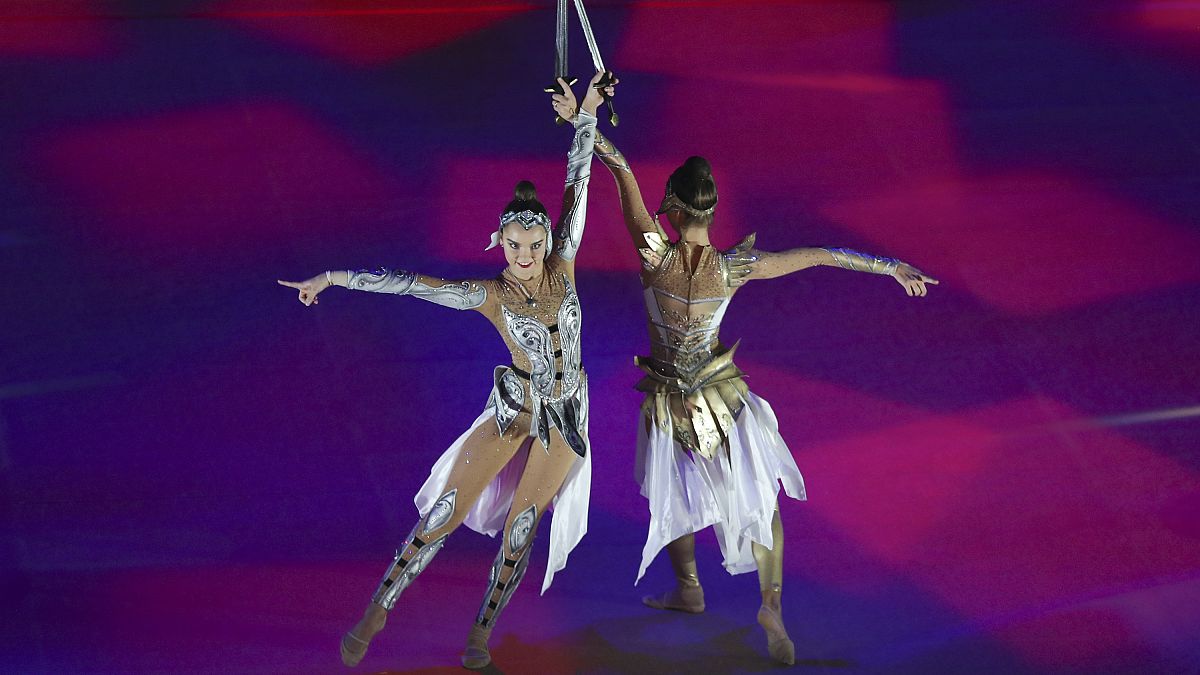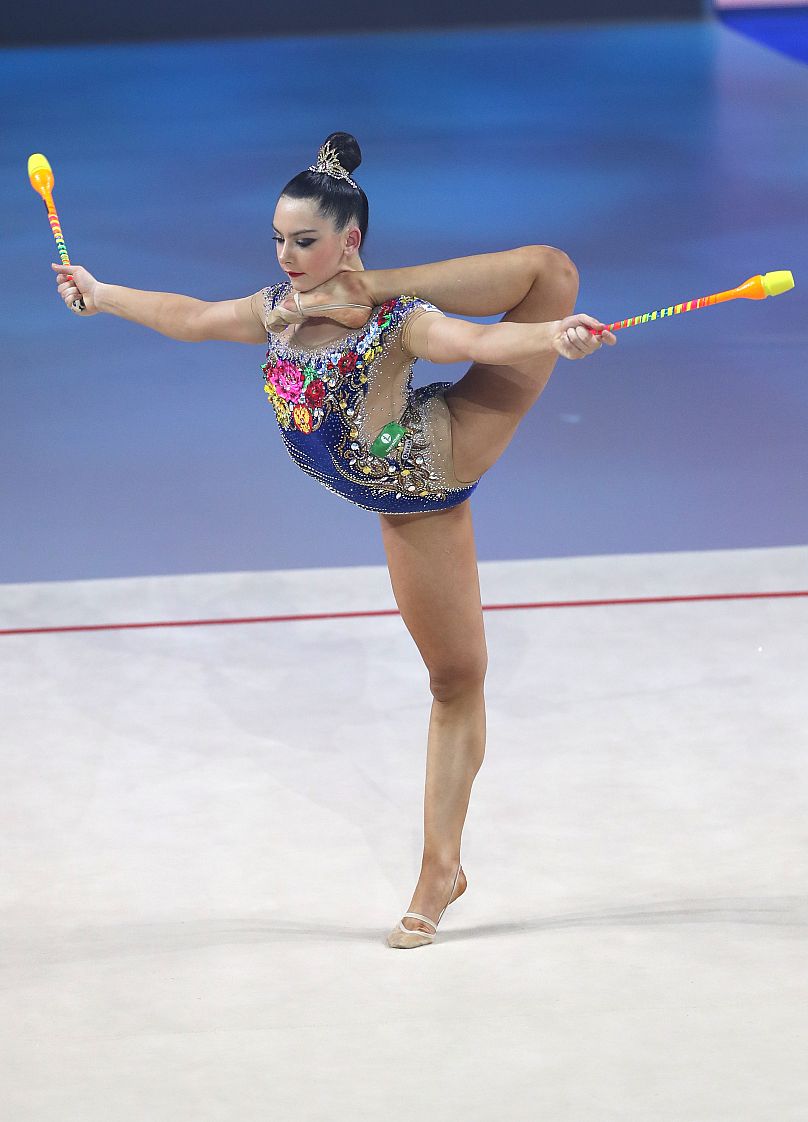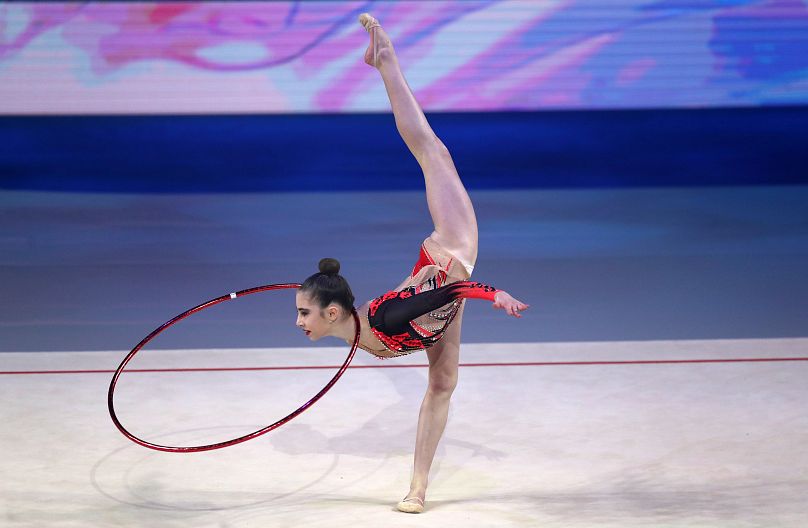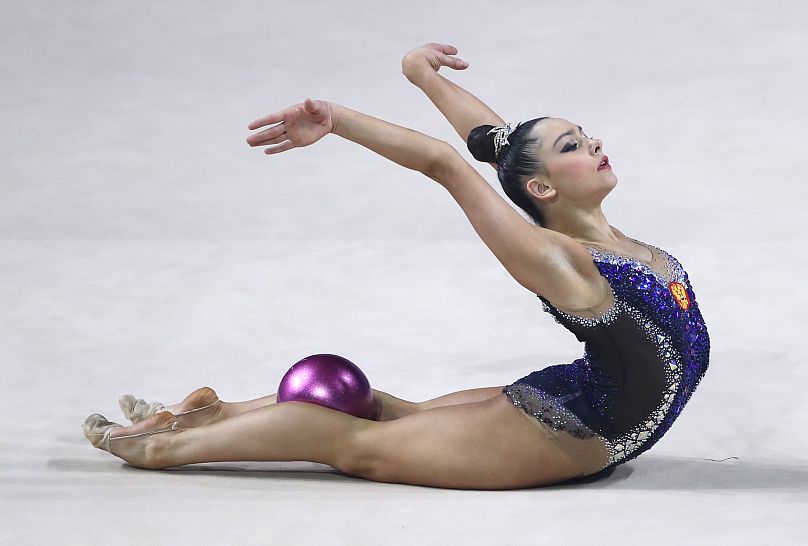In a competition which organiser Alina Kabaeva anticipates will become an annual event, 13 rhythmic gymnasts from 13 countries gathered at the VTB Arena in Moscow on 16–17 December for the first Divine Grace Experimental International Rhythmic Gymnastics Tournament.
The inaugural Divine Grace was no ordinary rhythmic gymnastics competition. The brainchild of Athens 2004 Olympic All-Around champion Kabaeva, the event was run under the auspices of her Alina Kabaeva Charity Foundation and brought together gymnasts from as far afield as Australia, Mexico and Canada to provide two days of exceptional performances.
In many sports, rhythmic gymnastics included, a new Olympic cycle brings an opportunity to evaluate the rules of competition and to make changes. For the 2022–2024 cycle, the rhythmic gymnastics Code of Points will place more value on the aesthetics and artistry of gymnasts. New rules will take inspiration from those of 2001–2005, when Kabaeva was an active gymnast.
While current rules place strict limits on gymnasts’ performances – the number of elements is restricted, and additional complexity discouraged – at Divine Grace, the number of performance elements was unlimited, with athletes able to show the full extent of their skills and capabilities. The gymnasts taking part in Moscow were judged according to mixed rules made from those used in 2001–2005 and the new ones - 2022–2024 Code of Points.
The competition, while aiming to amaze and delight in equal measure, created a platform for discussion. Athletes, coaches and judges could share their experiences and thoughts on the future of the sport.
Day One began with a visually stunning opening ceremony and a reminder to guests and viewers from tournament host Andrei Petrov that rhythmic gymnastics was officially created in 1934, in the USSR. “Over the years it has become part of our culture and code,” he said. “Divine Grace is an experiment that will help us to become closer to the unique nature of rhythmic gymnastics for the perfect balance of aesthetics and performance, past and present, new and traditional.”
The first day of competition was introduced by Canadian gymnast Lori Fung, who took gold at the 1984 Los Angeles Olympics, where rhythmic gymnastics made its debut.
“You have to dream big,” she told the participants. “You have to reach for the stars. Don’t let anybody tell you that you can’t do it. It is something that is in your heart, and you have to go for it.”
Canada’s Karina Kamenetsky got competition under way for the first apparatus, the hoop – like all apparatus a display of balance, pivots, jumps and elements of flexibility – with final scores ranking difficulty, artistry and execution.
To the delight of the home crowd, 17-year-old Russian Lala Kramarenko, silver medallist in the hoop at the 2021 Rhythmic Gymnastics World Cup series in Baku, took an emphatic victory with 36.65 points. Anna Kamenshchikova of Belarus finished second with 32.55 points, ahead of Mexico’s Marina Malpica, on 31.40 points.
Demonstrating a theme that was to run through both days, Kramarenko and Kamenshchikova also finished first and second in the next apparatus, the ball, amassing 35.30 and 31.60 points respectively. This time, it was Ketevan Arbolishvili of Georgia who joined Kramarenko and Kamenshchikova at the top of the overnight All-Around leader board, also scoring 31.60 for her ball performance.
On Day Two, Kramarenko maintained her dominance, finishing first in both the clubs and the ribbon, with Kamenshchikova maintaining a steady second place for both apparatus.
In the clubs, Uzbekistan’s Natalya Usova matched Kamenshchikova’s 32.35 points, while in the ribbon it was once again Arbolishvili who took third place to secure the All-Around bronze with 123.45 points overall, behind Kamenshchikova’s 127.25.
But there was little doubt as to who would be taking the podium’s top spot. With victory in all four apparatus, Kramarenko amassed an outstanding 141.60 points, impressing the judges and thrilling the crowds in the arena along the way.
The three medallists were presented with their prizes and joined on stage by a star-studded line-up of rhythmic gymnastics Olympic All-Around gold medallists: Fung, the first Olympic champion in 1984; Alexandra Timoshenko (Unified Team), Barcelona 1992; Ekaterina Serebrianskaya (UKR), Atlanta 1996; Yulia Barsukova (RUS), Sydney 2000; Kabaeva (RUS) Athens 2004; Evgeniya Kanaeva (RUS), Beijing 2008 and London 2012; and Margarita Mamun (RUS), Rio 2016.
In an emotional closing speech, Kabaeva reiterated her wish for the competition to become an annual event and appealed “for all of us to make rhythmic gymnastics more interesting, more varied, more appealing, so there are no limits to perfection”.



